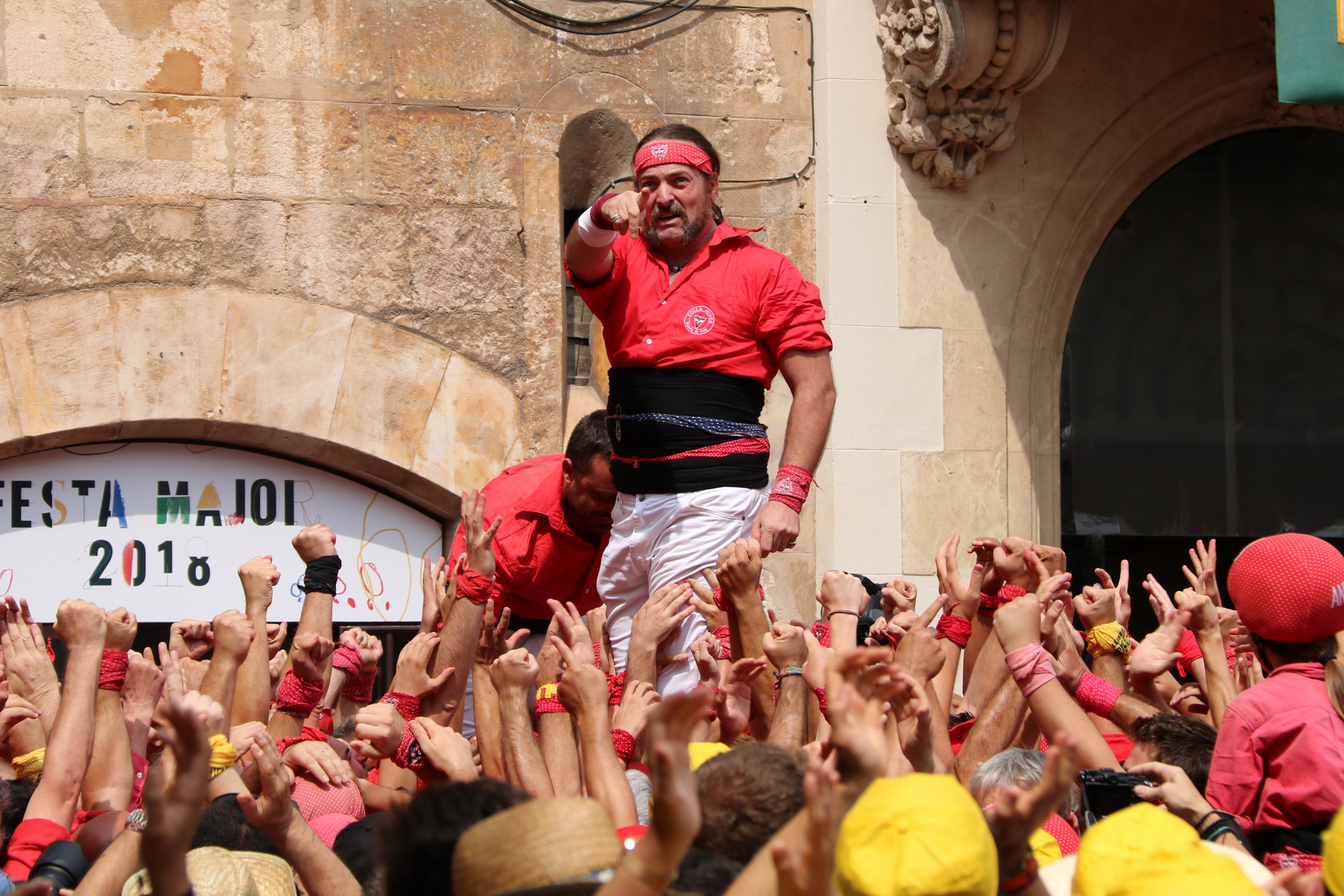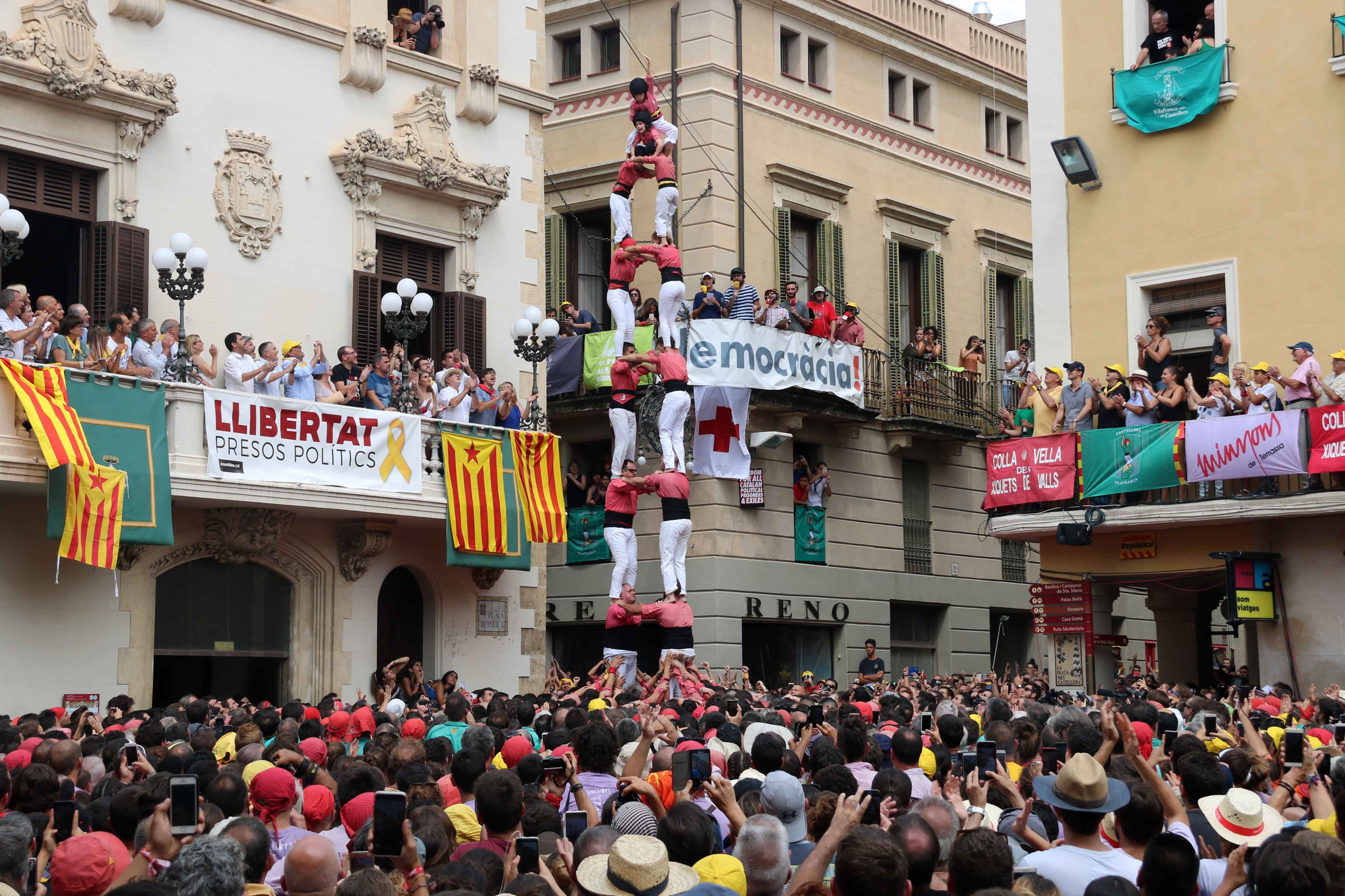Human towers celebrated at Sant Fèlix
One of the most important days for this centuries-old competition is celebrated in Vilafranca del Penedès

An integral part of Catalan culture, human towers—known as ‘castells’—are celebrated on Thursday August 30, the day of Sant Fèlix, by teams across the country. Four teams participated: the Castellers de Vilafranca, the Colla Vella dels Xiquets de Valls, the Colla Jove dels Xiquets de Valls, and the Minyons de Terrassa.

This event, held in the town of Vilafranca del Penedès, is perhaps the second most important date for the sport – second only to the Castells Competition in the southern town of Tarragona. It saw the attendance of Catalan president Quim Torra, parliament speaker Roger Torrent, and various party officials.
A time-tested tradition
Literally translated as ‘castles,’ this acrobatic practice finds its roots in Valencia, where it was first documented in the 17th century. It’s Tarragona, though, which is thought of as the home of this tradition, and where one can find a commemorative statue.

There are various qualifying elements to the structures, which are mainly measured by tiers and amount of people on each level. A tower is complete once the individual at the very top – a child, sometimes as young as five, called the ‘enxaneta,’ raises their arm.
‘Fer pinya,’ to give support
At first glance, ‘castellers’ – the competitors – seem to be wearing simply traditional dress. But at a closer look, there’s more to the uniforms. The colors of the short denote the team, which is often separated by neighborhood or city, and the black sash tied around the waist not only provides back support but is an important foothold for the participants climbing up – or down, the most perilous part.

But even with an accident or a fall, a casteller will be protected by a human safety net and support network all around the base of the tower. This element of the tower has given Catalan one of its most unique expressions, ‘fer pinya,’ which means to figuratively come together in strong support of someone, or something, in the face of adversity. 